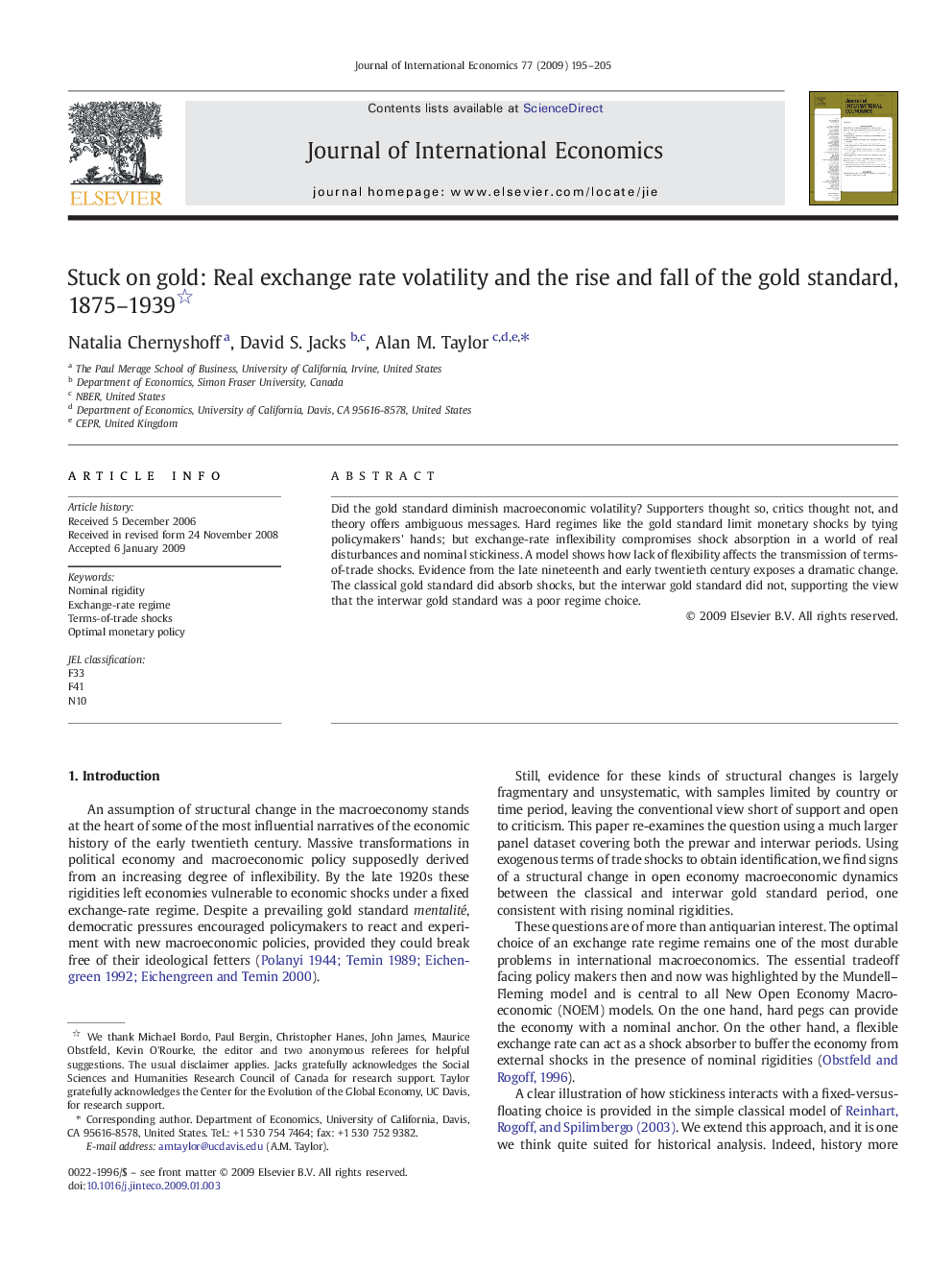| Article ID | Journal | Published Year | Pages | File Type |
|---|---|---|---|---|
| 962454 | Journal of International Economics | 2009 | 11 Pages |
Abstract
Did the gold standard diminish macroeconomic volatility? Supporters thought so, critics thought not, and theory offers ambiguous messages. Hard regimes like the gold standard limit monetary shocks by tying policymakers' hands; but exchange-rate inflexibility compromises shock absorption in a world of real disturbances and nominal stickiness. A model shows how lack of flexibility affects the transmission of terms-of-trade shocks. Evidence from the late nineteenth and early twentieth century exposes a dramatic change. The classical gold standard did absorb shocks, but the interwar gold standard did not, supporting the view that the interwar gold standard was a poor regime choice.
Related Topics
Social Sciences and Humanities
Economics, Econometrics and Finance
Economics and Econometrics
Authors
Natalia Chernyshoff, David S. Jacks, Alan M. Taylor,
